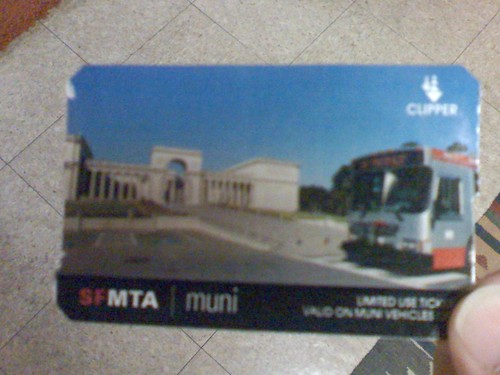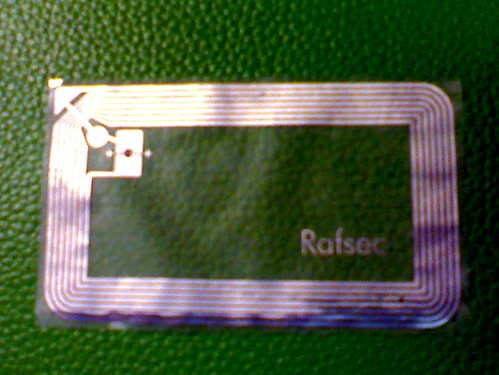It made me think, how about I perform an autopsy on one of those Muni Limited Tickets made of paper? One person was able to take a photo showing the guts underneath the paper, but I wanted to see the insides for myself.
Here's what I started with:

I found this leftover card on Monday with no value and decided to simply soak it in a glass of water. In a matter of minutes, the water penetrated the paper layers and I started peeling it off little by little. The way it was constructed is a sturdy piece of paper on both sides, and sandwiched in between is the RFID technology.
Here's what it looks like after peeling off the layers and rinsing it clean:

The RFID layer contains a ribbon surrounding the edge. This is what is known as the "antenna" as it makes communication contact with the Clipper readers. The chip is the little black dot in the upper right hand quadrant and contains the memory that holds it's serial number, card expiration, and all transactions. The antenna is connected to the chip so it can read and write information.
There's a reason why Muni can't recycle these, it's because the RFID layer is not recyclable.
Since I did wash off the paper layers and bent it a few times, I likely destroyed the card for future use. But it was a cool experiment!
There's a reason why Muni can't recycle these, it's because the RFID layer is not recyclable.
Since I did wash off the paper layers and bent it a few times, I likely destroyed the card for future use. But it was a cool experiment!
No comments:
Post a Comment